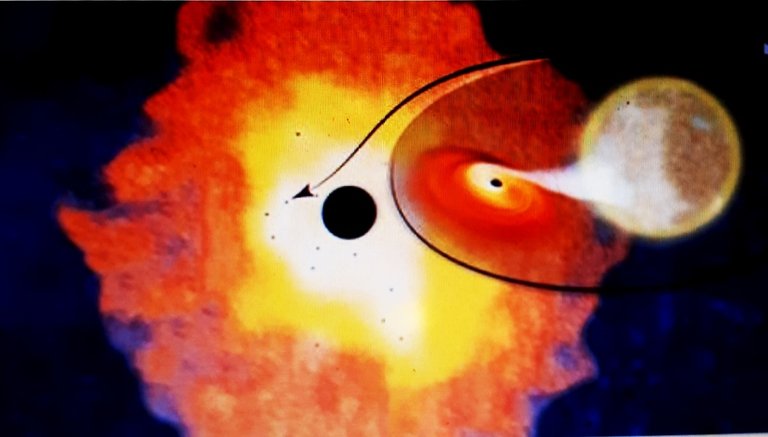
The scientists trust that there are a few little dark gaps in our world's middle. The specialists from the United States Columbia University looked into new data about dark gaps by concentrate the entire inestimable gases for a couple of years.
For a few years, analysts from the United States Columbia University specialist Chuck Healy are examining dark opening or dark gap. In the focal point of the system, the coconut grapes transformed into a dark opening in the focal point of the world. Stargazer Ranjan Rashmi can utilize that light.
Specialists found that the dark gap was the wellspring of some radiation from the focal point of the system. It is known as Sagittarius A *. However, the wellspring of all the beams isn't that immense dark opening once more. Others originate from little estimated dark gaps scattered in the district. Analysts have for some time been considering having such a dark opening in the focal point of the world. They believed that there may be many dark gaps in the focal point of the cosmic system. Specialists Hailey and his associates discovered proof of this.
Analysts utilize information from the Chandra X-beam Observatory to turn the Earth. A specialist from Columbia University, drove by analyst Healy, picked 12 wellsprings of radiation far from the light-long periods of the system, and believed that they were originating from little dark openings.
This investigation article was distributed in 'Nature' magazine.
Analysts say that they have examined in regards to twelve dark openings, which are 10 times more noteworthy than the Sun's mass. These are little dark openings. Be that as it may, there is a colossal dark opening of 40 million times more than the Sun.
Specialists say they are found in little dark openings looking for the stars. At the point when the dark gap pivots with a star, at that point its sidekick expends everything in the star. In the shadow of the starlight, the starlight was lost. This technique for turning with stars is called double framework. Progressively, the brilliant circles of hot gas are shaped when the partner star is gulped. It can be seen with an intense telescope color beam. Amidst a huge number of dark gaps, Soil and his group can identify dark gaps.
Heyy and his group trust that there may be 10 thousand little dark gaps in the cosmic system. In view of the perceptions of space experts, they gauge this. They say that if this dark gap was in the focal point of the cosmic system, it would have been so dull, which is hard to distinguish from the Earth. The greater part of them are not unmistakable, on the grounds that it is a long way from the focal point of the universe.
Hello, the newfound little scale dark gap has been stunned. As indicated by him, the quantity of dark openings in which there are no sidekick stars, which are not being gotten in the telescope. Numerous dark gaps might be unmarried.
Marksworth, best individual from the Amsterdam Horoscope Telescope Project at the University of Amsterdam, stated, "There is not something to fear in such countless dark openings loaded with our cosmic system. These are not dangers for our little world. Be that as it may, in the event that somebody goes to the focal point of the world, yet like the dark opening, little ones can seem horrible.
Each dark opening has an imperceptible limit called 'Occasion Diganta'. None of this could even leave the light. Any individual who crosses that skyline is lost until the end of time. On the off chance that somebody goes to that occasion skyline, at that point it will be lost in a horrible gravitational force. The littler the dark gap, the more noteworthy its capacity to drag or the more thick it is.
On the off chance that living from the enormous viewpoint, no living animal can make due in the focal point of the cosmic system. This is the place of creation. As indicated by Healy, it is the formation of astronomical items. It is much the same as a ripe land where vast stars develop and break down in another dark gap and devour another star.